Dwarf
The curse spread amongst the new human slave populace. Like their giant masters before them, they gave birth to diminutive and stunted children who grew up to be no more than 4 to 5 feet tall. A therapeutic sense of sadistic joy came over the giants seeing their slaves suffer the same fate as them. These new creatures were dwarfed by their human counterparts, so they became known as 'Durrwak', or 'Dwarves' in Giant tongue. Due to their size, these 'dwarves' were put to work within the mines and were quick to adapt to the gloomy environment. They worked with the keenly-sensed Kobolds to seek out gemstones and other precious metals. The giants discovered the dwarves' aptitude for crafting and were enslaved by the Ak'teshi fire giants, forced to forge armaments for the empire's slave armies.According to legend, the dwarven mortal hero, Duun, was the wisest and most battle-hardened among all dwarves during the War of Broken Chains. A legendary smith of near-divine power, poems and songs tell allegorical tales of how he reforged the dwarven people in the furnaces of war. Since then, the dwarves have revered Duun and the rest of the Dwarven Pantheon and sought to follow in their footsteps. Through constant, steady work, they strive to emulate the perfect example set by the originators of the arts and skills the dwarves pursue.
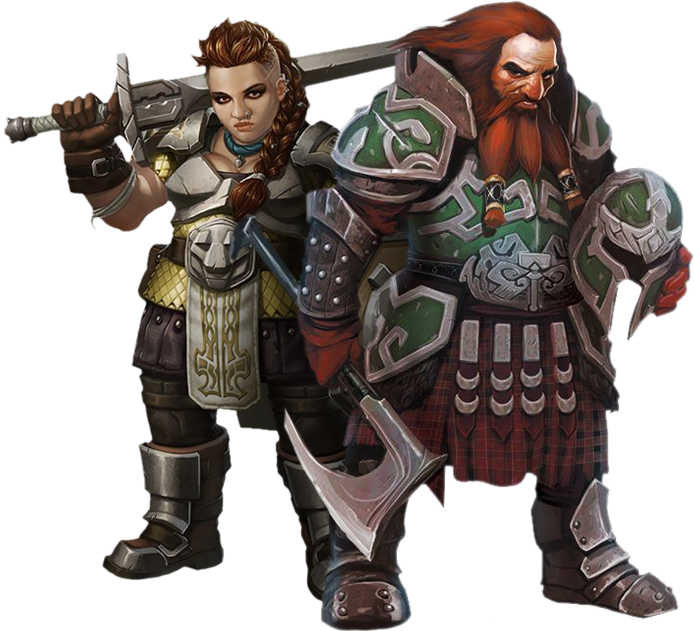
Perfection of the Craft
Dwarves have a strong sense of progress, and each day that goes by must bring them closer to the standard set by Duun. They see the lives afforded to them as too short a time to risk wasting a single day. Duun honed his kin's sturdy bodies in the fires of war, giving them the strength to work for long periods of time and fueled their spirits with a burning desire to follow his example. His gifts of durability and purpose gave the dwarves all they needed to devote their lives to refining their skills and improving their inner selves while they transform rock and ore into wondrous creations. Dwarf artisans regard the fruits of their labors with the same love that members of other races reserve for their children. A dwarf's works are built to last centuries, to carry a legacy into the world long after the dwarf is gone. Each item a dwarf craft is a step taken toward mastering a technique, and a physical representation of a dwarf's accomplishments. A dwarf who has lived a go fruitful life leaves behind a legacy of wondrous goods; gleaming metal goblets, gem-encrusted stone sculptures, tapestries made of ores and minerals, finely honed weapons, or the end result of any other endeavor that enriches the crafter while it pays homage to Duun.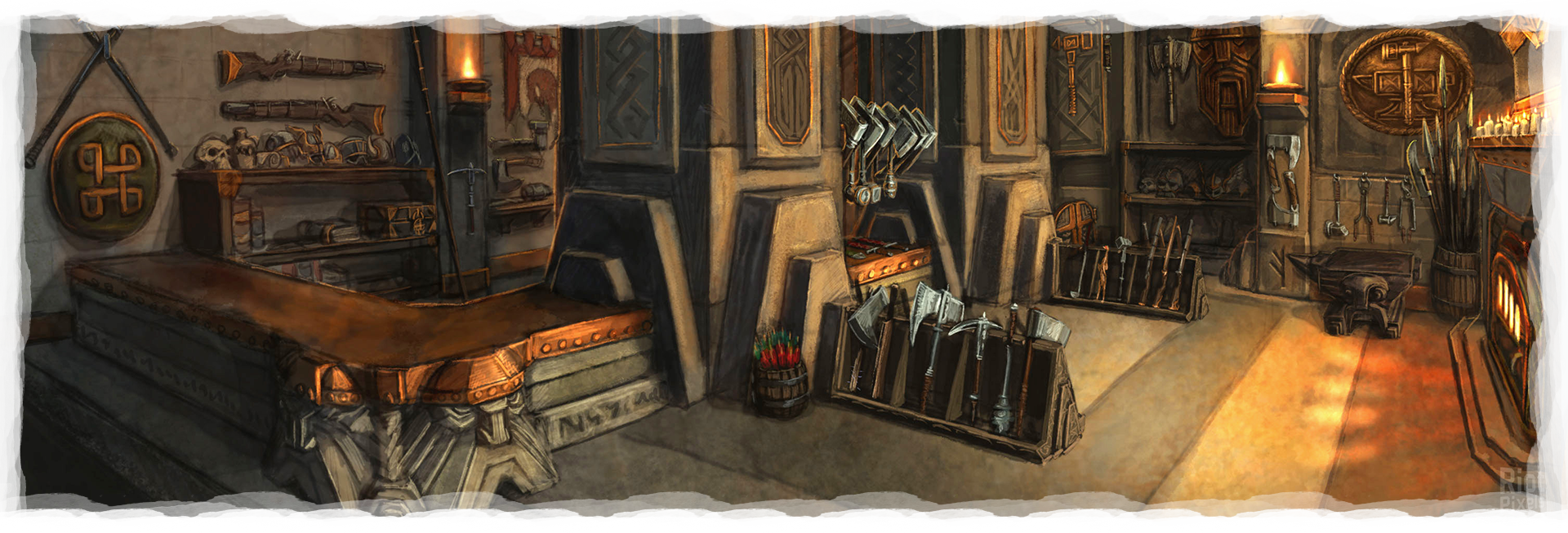
Stubbornness and Routine
Dwarves value stability, repetition, predictability, routine, safety, and tradition above all else. Chaos and change cause distractions from the task at hand, and a mind not fully focused can't give a task its proper attention. This rigidity in outlook, though a fundamental part of the dwarven psyche, can sometimes be a disadvantage. Dwarves don't change their minds easily, and once set on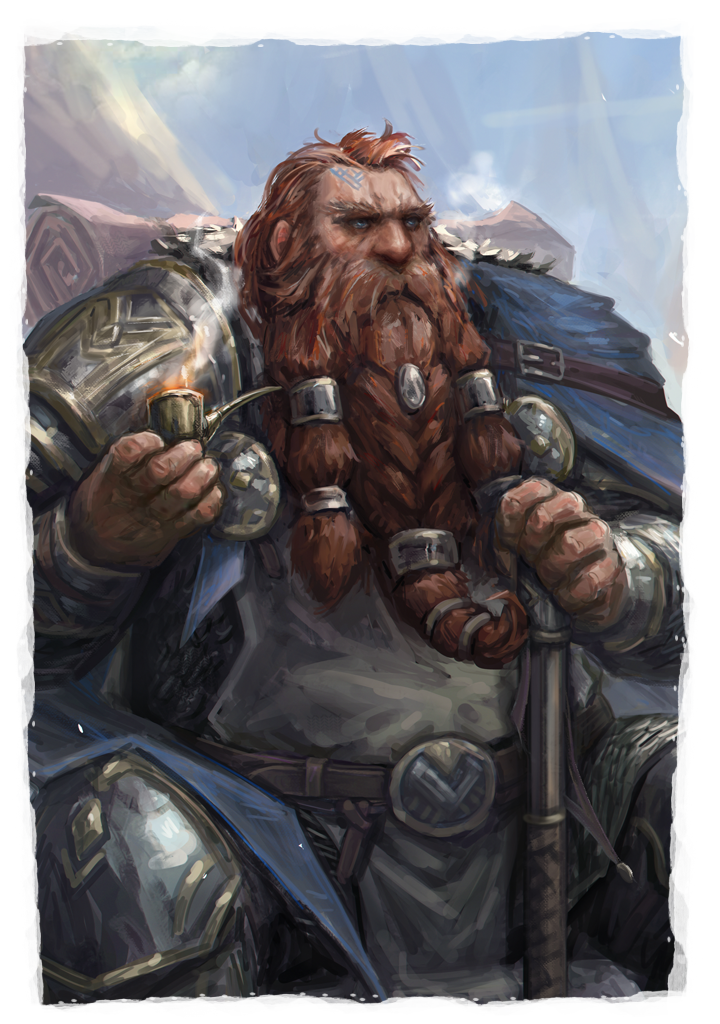
Clan and Family
The clan is the basic unit of dwarven society, an extended family that dwells together. Everything a dwarf does in life is devoted to improving or helping the clan, bringing security and stability to its members and greater glory to the group. The most important clan members to any dwarf are the members of one's immediate family because the instinctive connection between parent and child is stronger than the attachment between unrelated clan members. Nevertheless, the distinction is so slim as to be unnoticeable to outsiders-dwarves will endure hardship or lay down their lives for any of their clanmates, whether related to them by blood or by the devotion that holds the clan together. The life of a dwarf is all about doing good work and leaving behind a fitting legacy that continues to bolster the clan even after its creator has passed on. Dwarves who become parents think of their children as the greatest legacy they can leave the clan, and they raise them with the same care and attention to detail that they give to the items they create. A dwarf's direct descendants are often the ones who inherit the inanimate works their ancestor leaves behind. Marriage is sacred among the dwarves because it requires two children to move away from their homes to start a new family in the clan. The affected families feel a sense of loss that is healed only when a new dwarf child enters the world-an event that calls for great celebration. However, few dwarves develop romantic feelings for their spouses, at least not in the way that other races do. They view their spouses as collaborators and co-creators, their elders as respected experts to be obeyed, and their children as their most treasured creations. The emotion that underlies all those feelings might not be love, as others would term it, but it is just as intense.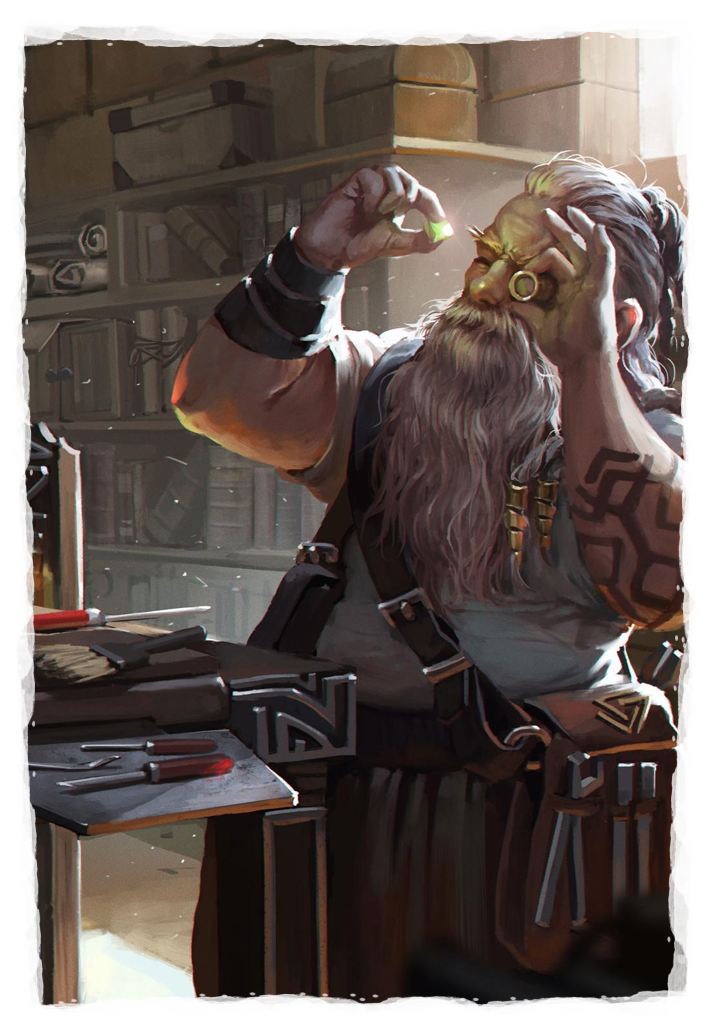 Clan Roles
Clan Roles
Every clan calls upon its members to fill three principal roles. First, many dwarves support the clan by working at an occupation that sustains the community; brewing ale, tending crops and preparing food, for instance.
Filling the second role is an equally large number of dwarves whose occupations involve the crafting of items and other forms of creation; smelting, smithing, gem-cutting, sculpture, and similar tasks.
The third function is performed by those who navigate the space between the clan and the chaotic creatures of the outside world. These dwarves are merchants, warriors, and envoys, tasked with representing the dwarves in dealings with other races and with providing a buffer between the clan and the potential threats of creatures and communities in the vicinity of the stronghold. A dwarf takes years to master a role. A weaponsmith starts work in the forge, providing manual labor. The dwarf might then work in the mines, pushing carts and learning to pick out the best ore sample. Slowly but surely, a dwarf masters every aspect of a task or an occupation from start to finish.

Long Grudges, and Unbreakable Oaths
Dwarves might have similar lifespans to their human brethren, but clan loyalties are deeply rooted in dwarven culture, so the oldest living clans often tell tales of a very different world. For example, some of the oldest clans living in Duunhollow can recall the day, thanks to a strong oral tradition, when a rival clan drove them into exile for 50 years. This longevity of clan loyalties gives clan members a perspective not often found in other races wherein such group rivalries do not exist.Fierce Traditionalists
Dwarves are solid and enduring like the mountains they love, weathering the passage of years with stoic endurance and little change. They respect the traditions of their clans, tracing their ancestry back to the founding of their most ancient strongholds since the fall of the Ak'teshi Empire, and don’t abandon those traditions lightly. Part of those traditions is devotion to the Silver Kingdom, the nation of the dwarves, the ruler of which is obliged to uphold the dwarven ideals of industrious labor, skill in battle, and devotion to the forge.A Promise Made is a Promise Kept
Individual dwarves are determined and loyal, true to their word, and decisive in action, sometimes to the point of stubbornness. Many dwarves have a strong sense of justice, and they are slow to forget the wrongs they have suffered. A wrong done to one dwarf is a wrong done to the dwarf’s entire clan, so what begins as one dwarf’s hunt for vengeance can become a full-blown clan feud. While not legally enforced by dwarven society, grudges and feuds commonly manifest among dwarves, and even against members of other races. Because of their long traditions, a dwarf who takes an oath is bound by it until that oath is fulfilled, regardless of the circumstance. Be it a promise to a friend, or a promise of vengeance, a promise is kept even through future generations of dwarves, which is partly why dwarven clan feuds are infamous for lasting centuries despite the average life span of dwarves. Those who break oaths or promises are widely reviled and shunned by dwarven society, often disowned by clans altogether.Governance
A clan is led by a King or a Queen who sits at the head of a noble family. Dwarf nobles are members of families that claim direct ancestry to the first dwarven followers of Duun. To the dwarves, leadership is a craft like any other activity, calling for careful practice and constant attention to detail in order to yield the most satisfying results. Young nobles apprentice for a time with masters of every profession in the clan. Apprenticeships expose a young noble to each part of the clan's operation and create personal ties between the apprentice and every group in the clan's society. By the time a dwarven noble takes on a leadership role, the noble has a clear overview of all the clan's interrelationships and has formed friendships with people from the clan's entire spectrum of roles. More importantly, a young noble's conduct while pursuing a variety of tasks gives the elder nobles a chance to assess the youth's character. Ideally, a noble who ascends to the leadership of a clan demonstrates an even temperament and an affinity for the clan's key functions. A noble who enjoys fighting might become a minister of war or a general, while one who loves smithing might become an overseer of the crafters' work. There are currently four major dwarven Kings and Queens, who each pledge their allegiance to the High King: Mara Freefeather, Barram Hearthide, Khazad Runemaker, and Thrayn Deepforger.Strongholds
Every dwarf clan maintains a stronghold as a haven from the chaos of the outside world. The first concern of any stronghold is defense, but older and prosperous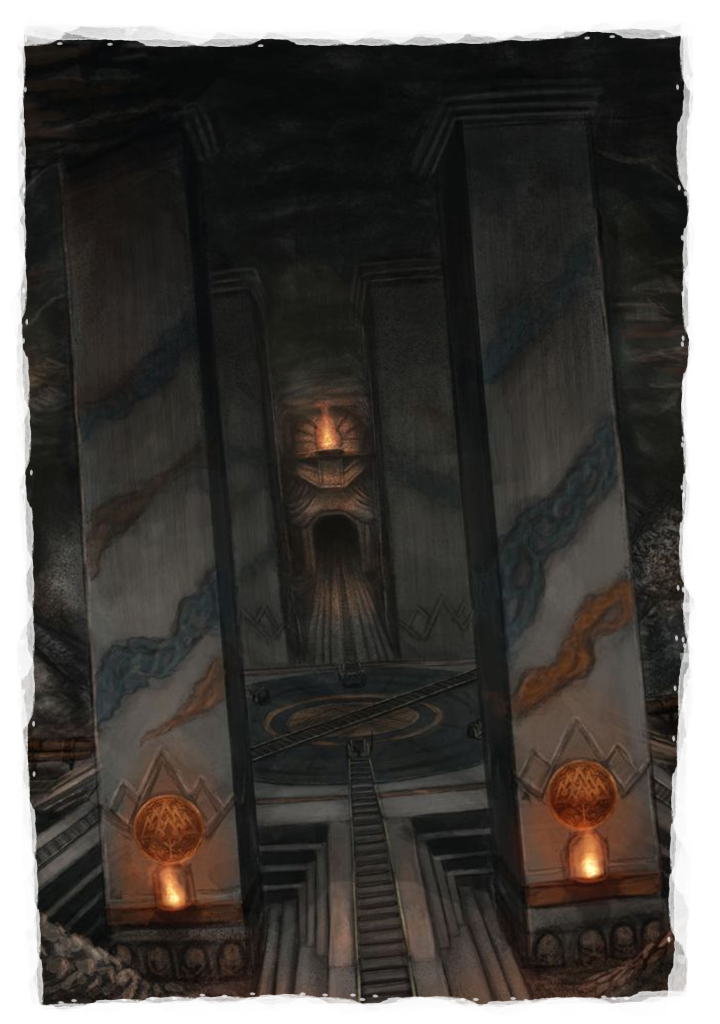
Fortresses of Routine and Solitude
A well-built stronghold is an easily managed, tranquil environment where dwarves focus on rearing their families and pursuing their craft. Since the fall of the Ak'teshi Empire, dwarves have carved out their strongholds underground for a variety of reasons. Their unmatched prowess in mining and stonework makes them ideal candidates to use the subterranean realm for living quarters, and considering their outlook on the rest of the world, dwarves wouldn't have it any other way. The stronghold's remoteness isolates the dwarves from the politics and turmoils of the surface world. Underground, they don't have to contend with the changing of the weather or seasons. One day inside a stronghold is much like any other day. The activities of the clan are governed by a firm schedule that provides every member with daily time for work, family, and personal enrichment. The forges are never allowed to go cold, and the mines around the stronghold are worked every hour of every day.Locked-Away Treasures
Dwarves are aware that their reputation makes any stronghold a prime target for thieves and raiders. The entrance to a stronghold doesn't broadcast its presence by being a stellar example of dwarven stonework. The outer precincts of a clan's home are plain and functional, decorated minimally or not at all, to give visitors and those passing nearby no reason to suspect what lies in the deeper chambers. The greatest treasures crafted by a clan are sequestered in the innermost chambers of the stronghold, behind secret doors in areas that are open to clan members but forbidden to all outsiders. These inner precincts hold the stuff of a thief's wildest dreams. In one chamber, gold foil lines the ceiling of an immense hall carefully worked with diamonds that mimic the stars at night. In another, jewels are used to form wondrous murals that tell of the clan's greatest deeds. A clan's feasting hall might be stocked with utensils and place settings made of silver and gold.Defense Above All
Every dwarf knows instinctively that clans and strongholds are tied together. As such, defending the stronghold is a concern that dwarves address in the earliest stages of construction. They plan and build with the goals of safety and security in mind, and the only way that a home can be safe is if it is protected against intruders. If a dwarven stronghold falls, then a clan will use the Mountainpass to flee as a last resort. The strongholds of many clans are honeycombed with secret passages designed to enable the dwarves to ambush and flank enemies. Dwarves also make liberal use of secret doors fashioned by dwarf artisans, slabs of stone that fit so precisely in their openings that no one but a dwarf knows how to locate and open one. Unlike some other races that guard their territory by creating features that actively deter invaders, dwarves rarely use arrow traps, pit traps, and other such measures that could cause harm to clan members and other dwarves. A defensive measure isn't doing its job if it ends up hurting those it was meant to protect.Dwarf Names
A dwarf’s name is granted by a clan elder, in accordance with tradition. Every proper dwarven name has been used and reused down through the generations. A dwarf’s name belongs to the clan, not to the individual. A dwarf who misuses or brings shame to a clan name is stripped of the name and forbidden by law to use any dwarven name in its place. Male Names: Adrik, Alberich, Baern, Barendd, Brottor, Bruenor, Dain, Darrak, Delg, Eberk, Einkil, Fargrim, Flint, Gardain, Harbek, Kildrak, Morgran, Orsik, Oskar, Rangrim, Rurik, Taklinn, Thoradin, Thorin, Tordek, Traubon, Travok, Ulfgar, Veit, VondalFemale Names: Amber, Artin, Audhild, Bardryn, Dagnal, Diesa, Eldeth, Falkrunn, Finellen, Gunnloda, Gurdis, Helja, Hlin, Kathra, Kristryd, Ilde, Liftrasa, Mardred, Riswynn, Sannl, Torbera, Torgga, Vistra
Clan Names: Balderk, Battlehammer, Brawnanvil, Dankil, Fireforge, Frostbeard, Gorunn, Holderhek, Ironfist, Loderr, Lutgehr, Rumnaheim, Strakeln, Torunn, Ungart
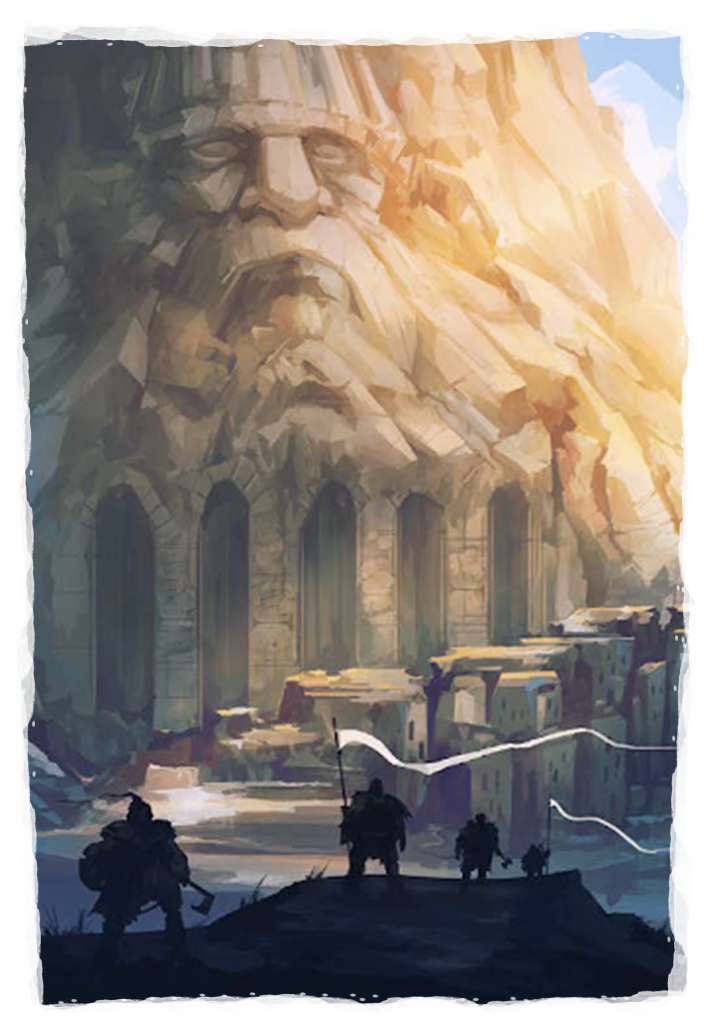
Dwarf Traits
Ability Score Increase. Increase one ability score by 2, and increase a different one by 2, or increase four different scores by 1.
Age. Dwarves mature and age at the same rate as humans, but tend to live slightly longer. On average, they live about 120 years.
Alignment. Most dwarves are lawful, believing firmly in the benefits of a well-ordered society. They tend toward good as well, with a strong sense of fair play and a belief that everyone deserves to share in the benefits of a just order.
Size. Dwarves stand between 4 and 5 feet tall and average about 150 pounds. Your size is Medium.
Speed. Your walking speed is 25 feet, and your speed is not reduced by wearing heavy armor.
Darkvision. Accustomed to life underground, you have superior vision in dark and dim conditions. You can see in dim light within 60 feet of you as if it were bright light, and in darkness as if it were dim light. You can't discern color in darkness, only shades of gray.
Dwarven Resilience. You have advantage on saving throws against poison, and you have resistance against poison damage.
Dwarven Combat Training. You have proficiency with the battleaxe, handaxe, light hammer, and warhammer.
Tool Proficiency. You gain proficiency with the artisan's tools of your choice: Smith's tools, brewer's supplies, or mason's tools.
Stonecunning. Whenever you make an Intelligence (History) check related to the origin of stonework, you are considered proficient in the History skill and add double your proficiency bonus to the check, instead of your normal proficiency bonus.
Languages. You can speak, read, and write Trade-tongue and Dwarven. Dwarven is full of hard consonants and guttural sounds, and those characteristics spill over into whatever other language a dwarf might speak.
Dwarven Toughness. Your hit point maximum increases by 1, and it increases by 1 every time you gain a level.
Dwarven Armor Training. You have proficiency with light and medium armor.
Notable Dwarves
Dwarf Traits
As a dwarf, you have the following properties.Ability Score Increase. Increase one ability score by 2, and increase a different one by 2, or increase four different scores by 1.
Age. Dwarves mature and age at the same rate as humans, but tend to live slightly longer. On average, they live about 120 years.
Alignment. Most dwarves are lawful, believing firmly in the benefits of a well-ordered society. They tend toward good as well, with a strong sense of fair play and a belief that everyone deserves to share in the benefits of a just order.
Size. Dwarves stand between 4 and 5 feet tall and average about 150 pounds. Your size is Medium.
Speed. Your walking speed is 25 feet, and your speed is not reduced by wearing heavy armor.
Darkvision. Accustomed to life underground, you have superior vision in dark and dim conditions. You can see in dim light within 60 feet of you as if it were bright light, and in darkness as if it were dim light. You can't discern color in darkness, only shades of gray.
Dwarven Resilience. You have advantage on saving throws against poison, and you have resistance against poison damage.
Dwarven Combat Training. You have proficiency with the battleaxe, handaxe, light hammer, and warhammer.
Tool Proficiency. You gain proficiency with the artisan's tools of your choice: Smith's tools, brewer's supplies, or mason's tools.
Stonecunning. Whenever you make an Intelligence (History) check related to the origin of stonework, you are considered proficient in the History skill and add double your proficiency bonus to the check, instead of your normal proficiency bonus.
Languages. You can speak, read, and write Trade-tongue and Dwarven. Dwarven is full of hard consonants and guttural sounds, and those characteristics spill over into whatever other language a dwarf might speak.
Hill Dwarf
As a hill dwarf, you have keen senses, deep intuition, and remarkable resilience. The dwarves of Farinholme are Hill Dwarves, as are many other dwarves across Meyland and beyond who choose to make their homes not in mountains, but standing fortresses around Cairn Alm and the Dagmurn Highlands.Dwarven Toughness. Your hit point maximum increases by 1, and it increases by 1 every time you gain a level.
Mountain Dwarf
As a mountain dwarf, you’re strong and hardy, accustomed to a difficult life in rugged terrain. Mountain Dwarves tend to be slightly taller than Hill Dwarves, and tend toward lighter colorations. The dwarves of Karin Muur, Mountainholme, and Duunhollow, and the various minor strongholds across the Garand's Ridge Mountains tend to be Mountain Dwarves.Dwarven Armor Training. You have proficiency with light and medium armor.
Genetic Ancestor(s)
Genetic Descendants
Lifespan
120
Average Height
4' 5"
Average Weight
120 lb.
Geographic Distribution
Dwarves and Ale
Dwarves have a reputation for being able to consume great quantities of ale. Although drinking plays a significant role in their culture, it is a mistake to assume that intoxication has the same effect on them as it does on humans. Humans drink to forget, while dwarves drink to remember. A dwarf deep in his cups is overcome by powerful, vivid memories of his past, especially events tied to lost kin, great deeds, or monumental failures. When dwarves drink in a group, this effect spreads among them. The clan might joyfully sing of triumph as they reminisce over the defeat of a dragon, or weep as they recall the death of a beloved elder. In contrast to clan gatherings, dwarves who drink alone invariably become morose and sullen; when separated from their clanmates, they can't avoid dwelling on unpleasant memories. It's the wise traveler who leaves alone the sole, drunken dwarf in the corner.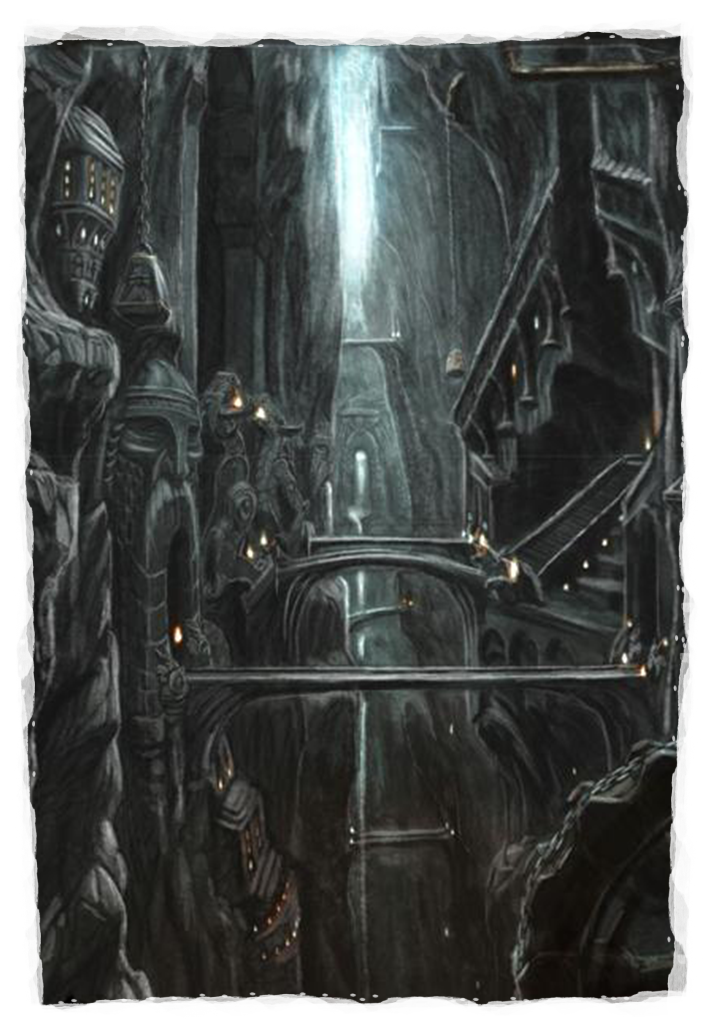
Enemies of Dwarves
If dwarves weren't so good at accumulating treasure, it's likely that they wouldn't have as many enemies. As things stand, almost every variety of marauding humanoid or greedy monster lusts after the riches that dwarves keep in their strongholds. The biggest threats to their security are chromatic Dragons and Giants, but other humanoids such as green-skins and the hated Deep-dwarves of clan Ashbight are their most numerous foes, especially due to The Green-Skin Wars , and The War for the Silver Crown . Chromatic dragons, by their nature, are often attracted to the treasures that dwarves gather in their fortresses. Although such a place might be too stout for a dragon to assault and take over, an evil dragon that makes its lair near a dwarven stronghold can be a threat to the occupants in many ways. Giants, particularly those seeking vengeance for the fall of the Ak'teshi Empire, have a special enmity toward dwarves and consider them ideal slaves. Even when captured and put to work against their will, dwarves are innately driven to bring their full effort to a task at hand. Even simple toil brings dwarves some relief from captivity. Giants don't launch direct attacks on dwarven strong-holds except under extraordinary circumstances. Their size is a great disadvantage in the underground passages of a fortress, potentially turning any such assault into a suicide mission. Warbands of green-skins dream of overrunning a dwarven stronghold and returning to the caves with war wagons laden with gold, gems, stout armor, and sharp weapons. Crafty green-skins will often take advantage of the Mountainpass to achieve this, utilizing the warrens of stone tunnels to sneak under a stronghold's treasure room to steal valuables.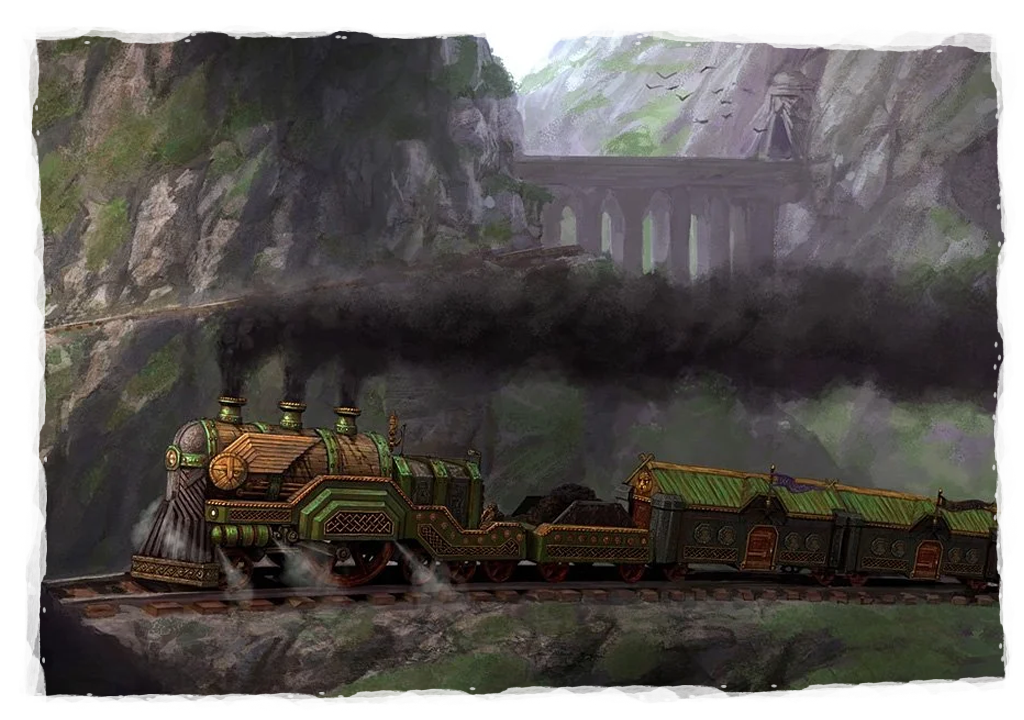

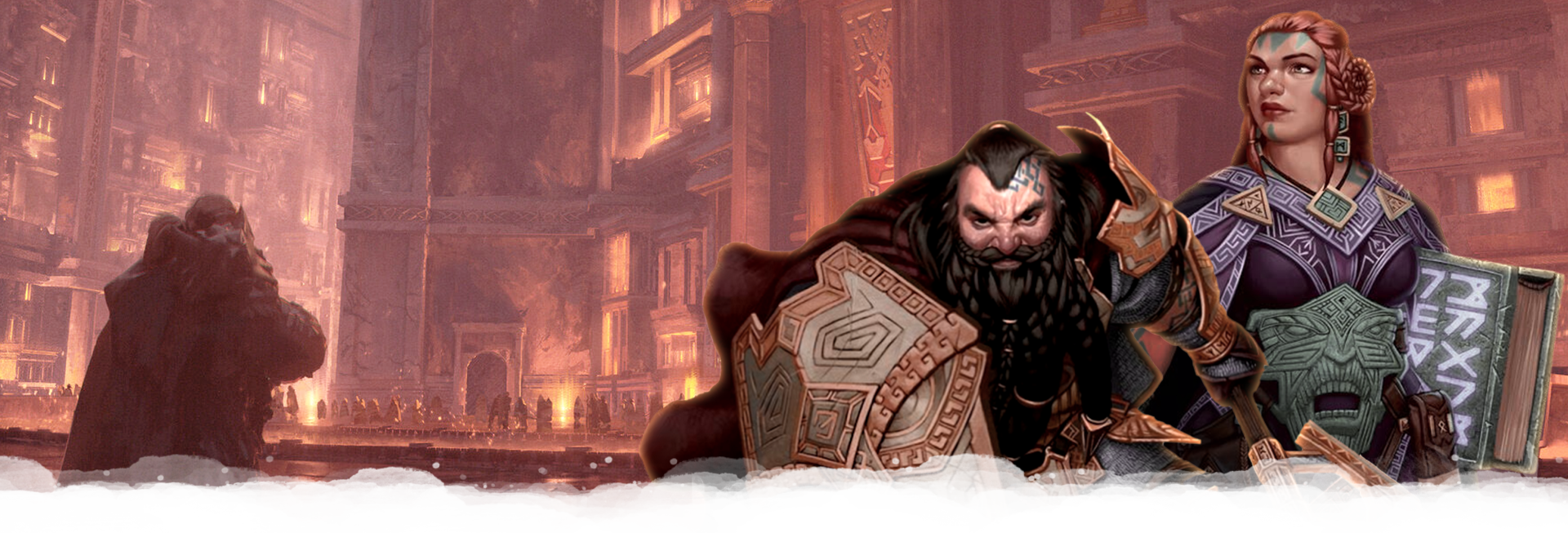


Hey this is a fantastic article I love the pictures and also Id love to know how you got the pictures cropped and that map picture made its so well done.